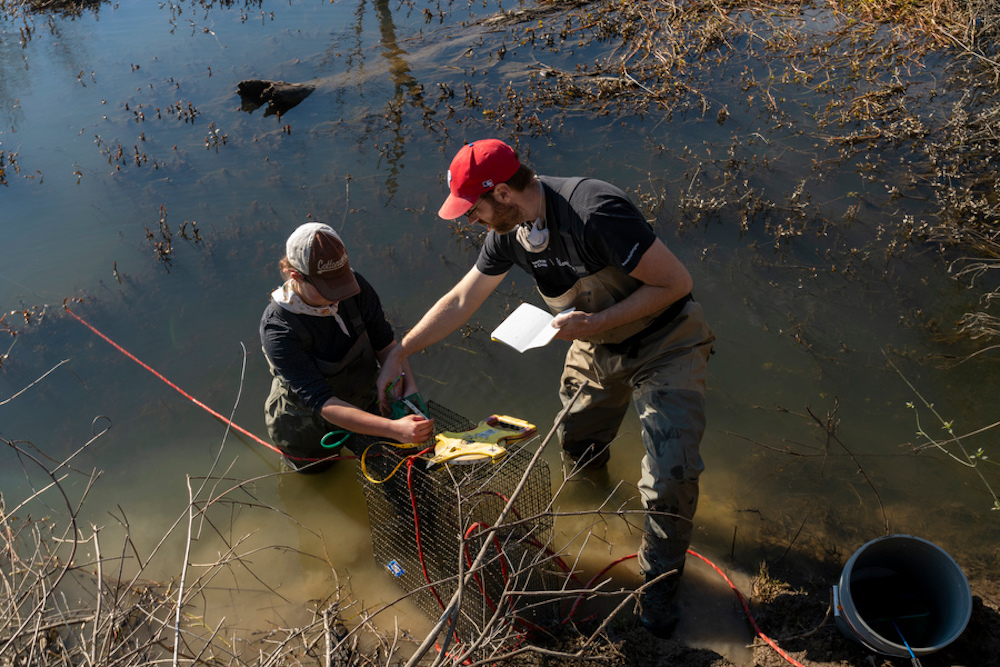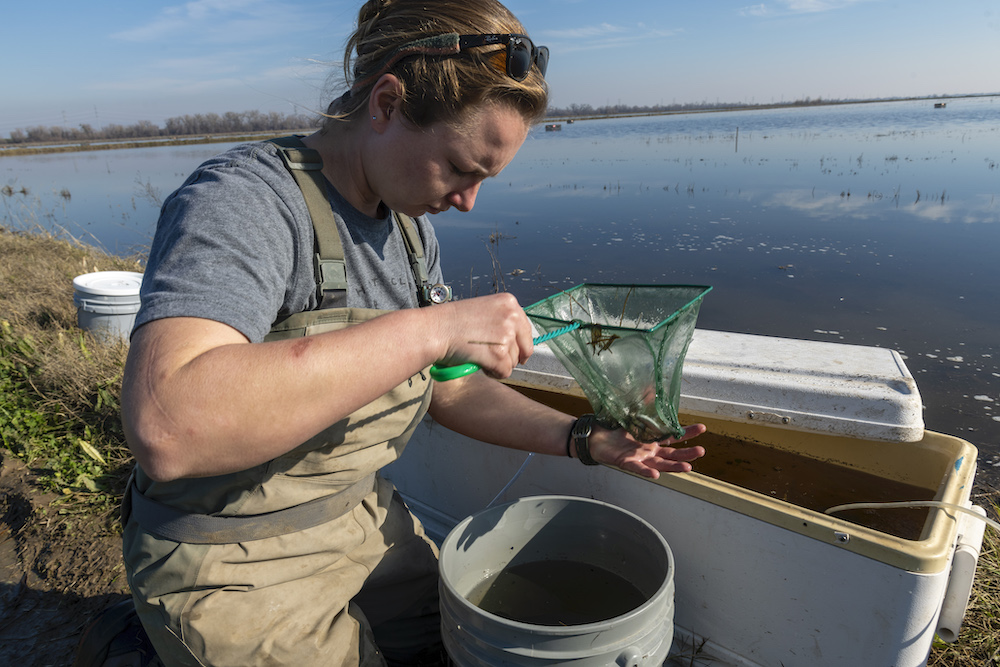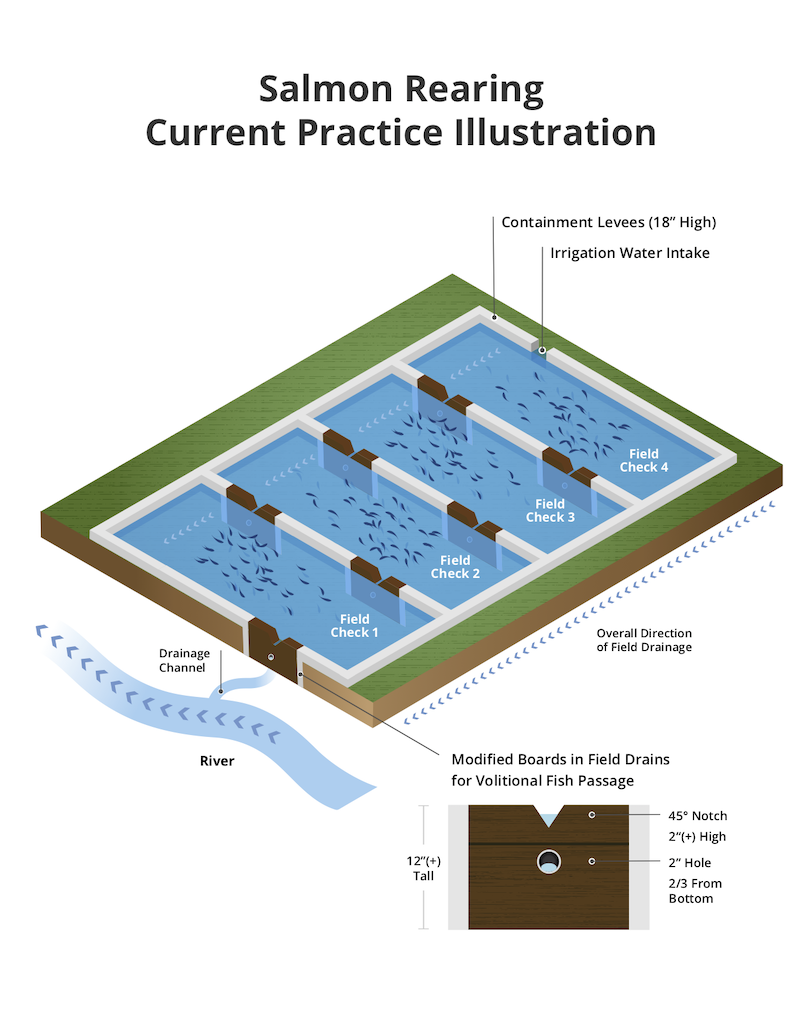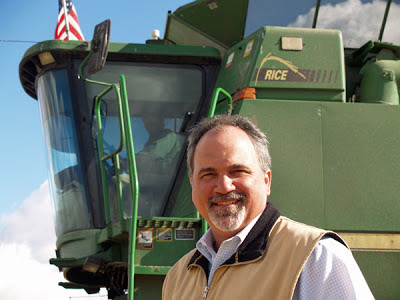Phase II of CRC’s Salmon Project Kicks into High Gear
By Paul Buttner
Phase II of the California Ricelands Salmon project is moving full steam ahead. It picks up where we left off with the first phase of this innovative project. Our past project work resulted in a preliminary indication that salmon raised in a floodplain habitat, specifically the Sacramento Valley’s rice fields, may have an increased chance of making it out to the Pacific Ocean. The project also tested-out various field treatments that are now the basis for a newly proposed ricelands salmon habitat practice.

In this next phase of the CRC’s Salmon Project, with fieldwork being led by a team of UC Davis researchers, we are working together to test our new salmon rearing practice concept, utilizing roughly 350 acres on three separate fields in the Sutter Bypass.
On one of these rice fields we have introduced 8,000 free swimming juvenile salmon. Most of these fish are tagged with a simple device called a Passive Integrated Transponder (PIT). This enables us to track the movements of these salmon while in the rice fields. One of our major objectives is to demonstrate that the young fish will move on their own volition down the rice field drainage path, passing through specially modified boards in the rice boxes, spend time eating and growing in each section of the field, until ultimately exiting the rice field for the river. This is a fundamental element to the design of this new practice.

We will also be surgically inserting a more sophisticated tag, known as a Juvenile Salmon Acoustic Telemetry (JSAT) tag, on about 600 fish. This will enable us to track how many successfully reach the ocean.
Finally, we are hopeful that the Sutter Bypass will naturally run and fully inundate our project rice fields. This will bring natural-origin salmon into these rice fields, allowing them to “extend” their time once the bypass flooding waters retreat, in the fish food rich floodwaters of these specially managed rice fields. In this scenario, we will collect valuable data regarding what runs are most prevalent in the rice fields. The goal is to then use that information and potentially develop a new approach benefiting natural-origin salmon, by enhancing winter-flooded rice fields for salmon rearing.
So, let’s hope for significant late winter rains so we can learn how to best help our struggling salmon here in the Sacramento Valley!

This work is made possible by major funding from the USDA’s Natural Resources Conservation Service, Syngenta and State Water Contractors. Other contributing sponsors include the following: American Commodity Company, California Family Foods, Rice Research Board, Corteva, Grow West and Lundberg Family Farms.






